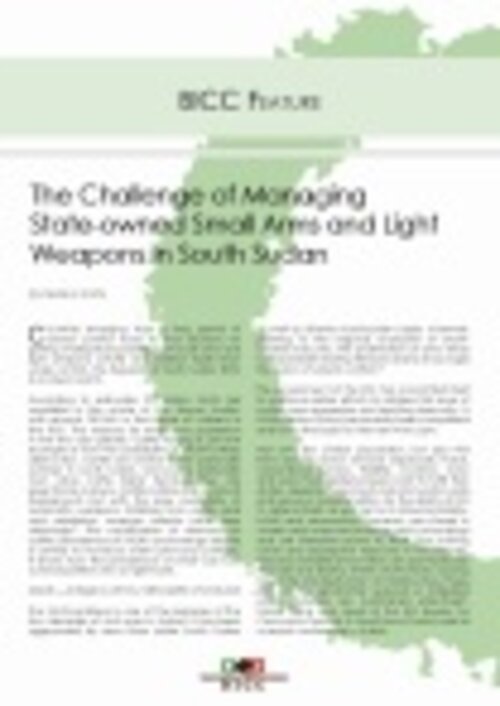Publications
The Challenge of Managing State-owned Small Arms and Light Weapons in South Sudan
Release Date
2011-10
Language
- English
Topics
- –
Countries emerging from a long period of armed conflict have to find solutions for getting widespread possession of small arms and light weapons (SALW) and related trade flows under control. The Republic of South Sudan (RSS) is a case in point. According to estimates, 2.7 million SALW are available in the whole of the former Sudan, with around 720,000 in the hands of civilians in the RSS1. The reasons for small arms possession in the RSS vary greatly. Cattle raiding is just one example of how the availability of SALW furthers destruction. Cattle are central to the pastoralist cultures in South Sudan, and young pastoralist men value cattle highly because they are essential as a dowry. Cattle rustling has a cultural background, but with the easy availability of automatic weapons, fatalities from cattle raids and retaliatory revenge attacks have risen alarmingly. The combination of demand for cattle, prevalence of SALW, and revenge deaths is central to numerous inter-communal conflicts. It shows how the prevalence of SALW can turn cultural patterns into a nightmare.
PDF-Download
BICC_Feature01_en.pdf
[English] (1.67 MB)

Cite as
@techreport{Kahl2011,
author = "Marius Kahl",
title = "The Challenge of Managing State-owned Small Arms and Light Weapons in South Sudan",
latexTitle = "The Challenge of Managing State-owned Small Arms and Light Weapons in South Sudan",
number = "1",
type = "Report",
year = "2011",
}
Document-Type
Report
Countries/Region
South Sudan



